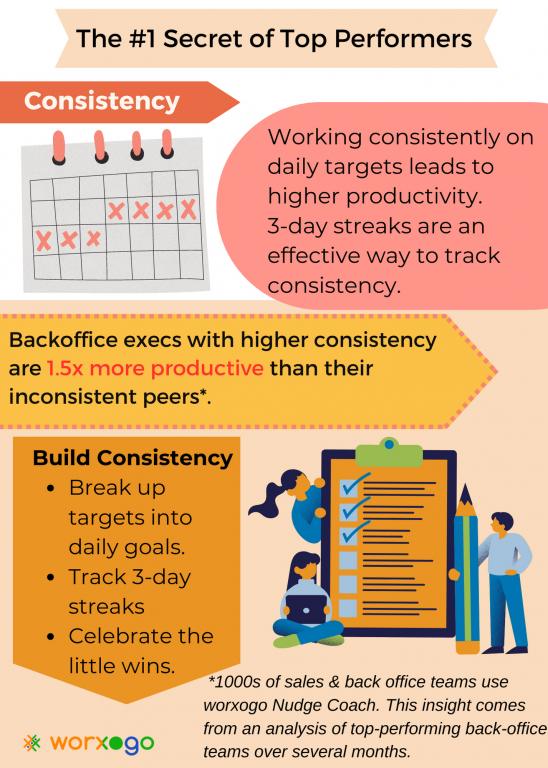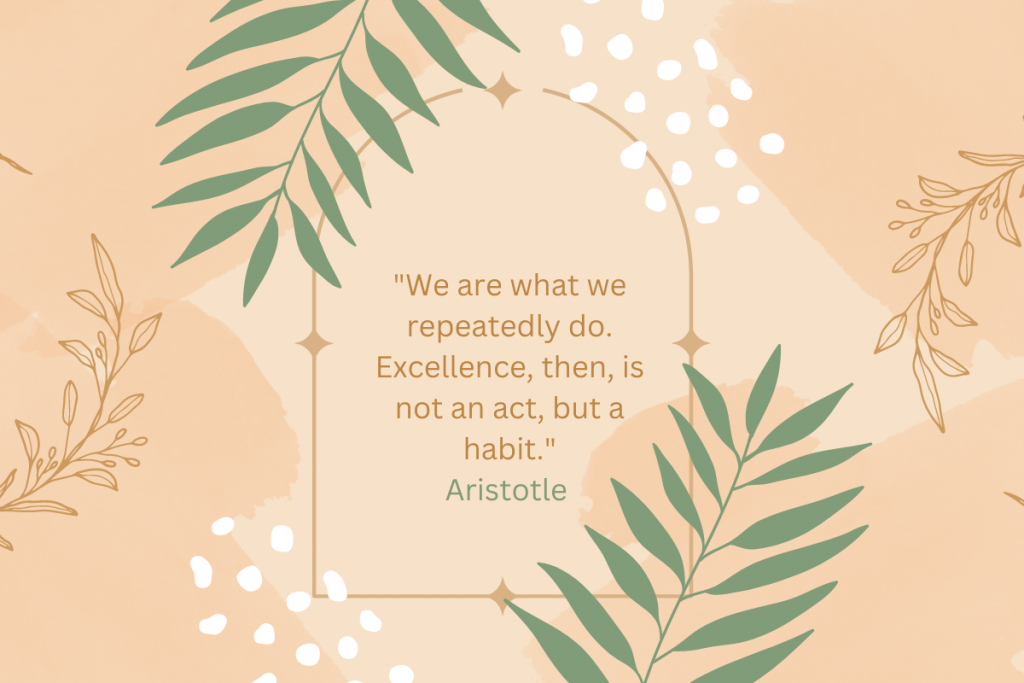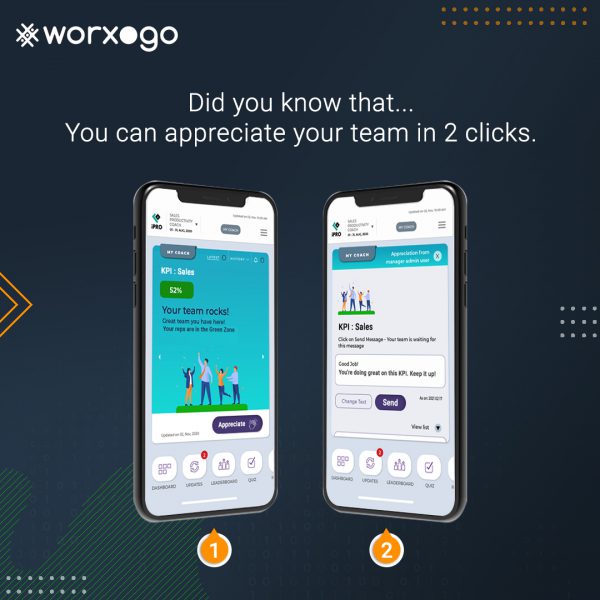In the hectic BPO world, finding the holy grail of efficiency and quality service can be hard. Imagine if the key to success was something as simple as building consistency in your team.
In this blog post, we look at what sets productive back-office executives apart, why they achieve superior results and how you can replicate the process in your team.
Consistency Beats Productivity
Athletes, gym trainers, writers, and even investment gurus all agree that regular commitment beats sporadic bursts of effort any day. According to a recent study, regularly doing muscle-building exercises for 6 reps spread out over 5 days a week is more effective than doing 30 reps in one day.
How about the way we work?
worxogo Behavior Labs took a look at high performers in back-office teams over a period of several months. They found that executives who consistently worked at their targets were 1.5 times more productive than their peers.

Consistency, fitness instructors tell us, is like a muscle. It has to be worked. High performers work consistently towards their goals, daily. In fact, top performers in any field will credit their success to consistency.
Take the wildly successful comedian and writer Jerry Seinfeld, who credits his exceptional writing skills to consistent practice. The Seinfeld Method involves tracking each day that you do your key task. For Jerry, that was writing. This can be as simple as taking a calendar and marking it with an X for each day you do the task. Do the same the next day and the next. Pretty soon, a chain of Xs will form on your calendar. All you have to do is ensure that the chain does not break. In other words, make sure you do that one thing. Every. Single. Day.
Top performers in sales teams do the same.
In back-office teams, top performers work every day on their targets – chipping away at their monthly targets consistently, and outperforming their less consistent counterparts.
The good thing is that consistency is about habit-building – by creating the right environment for it, you can help your team to develop consistency.
Inch by inch, everything’s a cinch! Here’s how you can make a start.

3 Steps to Build Consistency in your Back-Office Team
Create daily goals
Break down monthly targets into daily goals.
A monthly target does two things. On one hand, it creates an illusion of time available to achieve the target. On the other hand, it creates a sense of being too much to do. Both of these together build an environment where procrastination thrives. In Behavior Science this is called “Present Bias” – a tendency to discount the future rewards and place a higher value on the reward in the present moment.
Seeing targets broken down into daily chunks helps the brain process the challenge better and work towards achieving it.
Track daily behavior
Track your teams daily behaviors. Help your team aim for a three-day streak. And then aim to repeat the streak as many times as they can.
It’s motivating if your team is able to see their progress visually. This could be as low tech as a desk calendar or a digital tracker. According to worxogo’s research, the higher the number of streaks, the higher the productivity and target achievement will be.
Celebrate the little wins
Building new behaviors is always challenging. Charles Duhigg’s habit loop is an important framework to understand how habits work. And a crucial element in habit building is reward. The brain has to perceive a reward to stay committed to the new behavior.
External validation, especially from a superior at work is motivating and helps teams stay more committed. This needn’t be elaborate at all. A well-timed short note of appreciation can do the trick. Once again, as low key as a WhatsApp text will do. Digital tools like worxogo Nudge Coach can help you do this for your large teams. Send personalized texts to each of your team members, while adding your personal touch, in two clicks.

Thousands of sales and back-office teams build consistency and improve productivity using worxogo Nudge Coach. If you’d like to know how you can too, click on demo for a 30-minute look at the product.


